Whether you’re a wellness enthusiast or just a traveller passing through, Sapa’s herbal baths are one of those activities you simply shouldn’t miss. Slipping into a hot, healing bath with a view of nature is not only beneficial for your body and mind: it’s an opportunity to experience the wellness culture of Vietnam and its ethnic minorities. Here’s the full scoop on this traditional therapy and where you can try it.
Sourced from nature
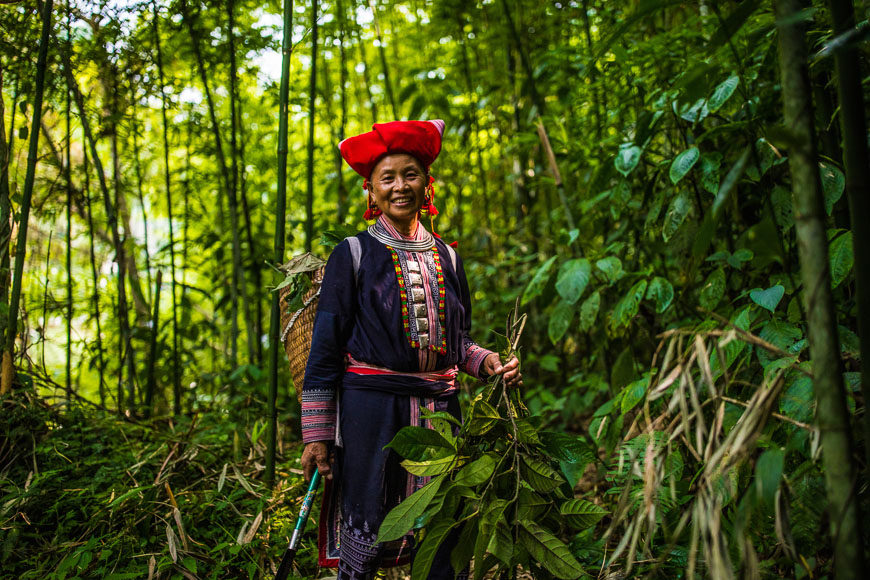
The Red Dao are one of 54 ethnic groups living in Vietnam. Red Dao communities settled in the high mountains of Sapa in the 18th century, bringing with them their own social structure, language, costumes, and rituals, including health rituals. The Red Dao are renowned for their healing baths, which are made from medicinal plants foraged in the forest. Each family has its own herbal bath recipe, which is held by the women in the family and passed from mothers to daughters.
TIP: At Topas Riverside Lodge, you can join Ms. Phu — a Red Dao woman from Nam Cang Village — as she cuts plants from the forest, and watch her prepare the whole bath from start to finish.
Bathing benefits
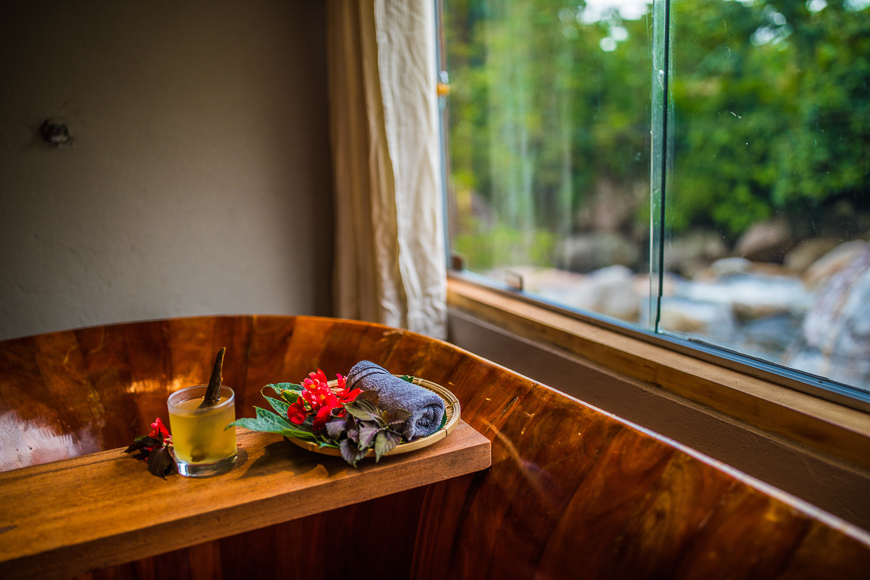
In Red Dao communities, herbal baths are prepared for women a week after giving birth, to help them recover their strength. The baths are also used to alleviate aches in muscles and bones, and to ward off cold and flu during the chilly Sapa winters. In modern wellness terms, the baths combine hydrotherapy and aromatherapy to increase blood circulation, calm the mind, and reduce pain in the body. The herbs in the bath gently detox pores and soothe skin.
The right ingredients
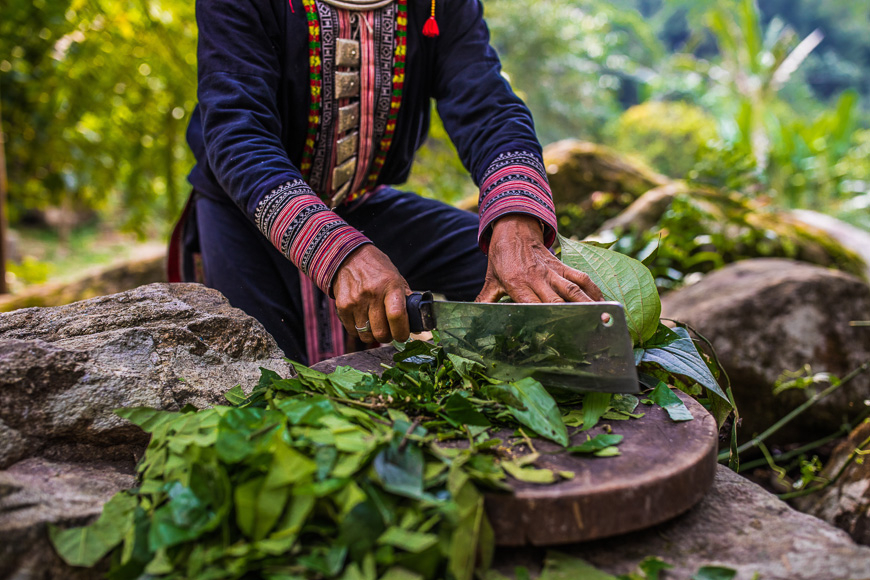
Red Dao baths may have 10 or more ingredients, including rare plants. Commonly used ingredients are elderberry, Vietnamese balm, fig leaves, wild pepper leaves, bur-reed, tropical dogwood, and cinnamon. Stems and leaves are chopped, dried in the sun, and boiled for hours over a fire to produce a sweet-smelling, wine-red mixture. It’s not just what goes into the tub that matters: the tub also plays a role. Bathing tubs are made by hand from Pơ mu — a type of cypress wood — that add a grounding fragrance to the hot water.
Bath time
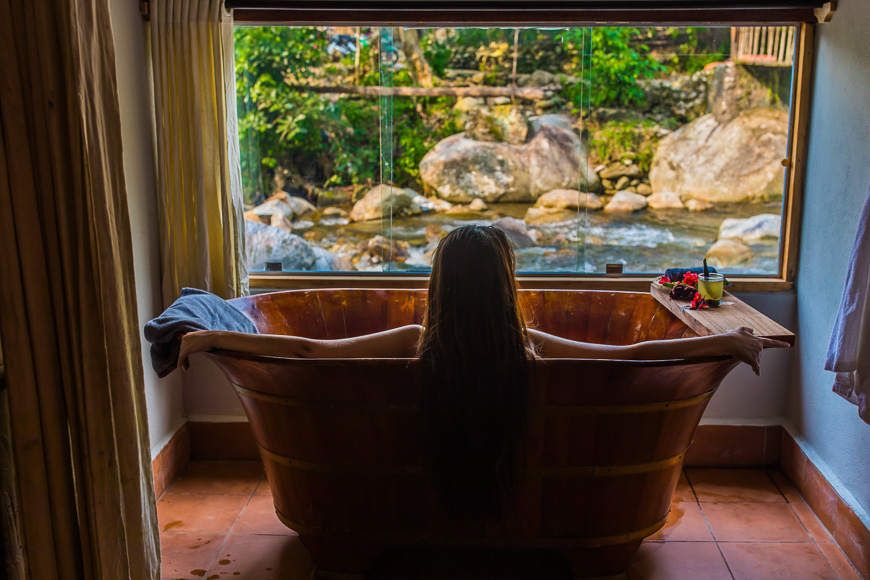
Red Dao baths are usually set up in small, enclosed rooms so that the fragrant steam from the bath can be inhaled and enjoyed by the bather. Lime leaves, star anise and orange peels may be added just before the bath begins to heighten the aroma. Finally, there’s nothing left to do but sink into the steaming, foamy water and relax. You might like to use a scooper to pour warm water over your back and shoulders, scrub your skin with leaves or a washcloth, or simply lie back and feel the bath work its magic.
TIP: To have the best effect, Red Dao baths are usually heated to around 35 degrees Celsius. The recommended bathing time is between 15 and 25 minutes.
Where to try it
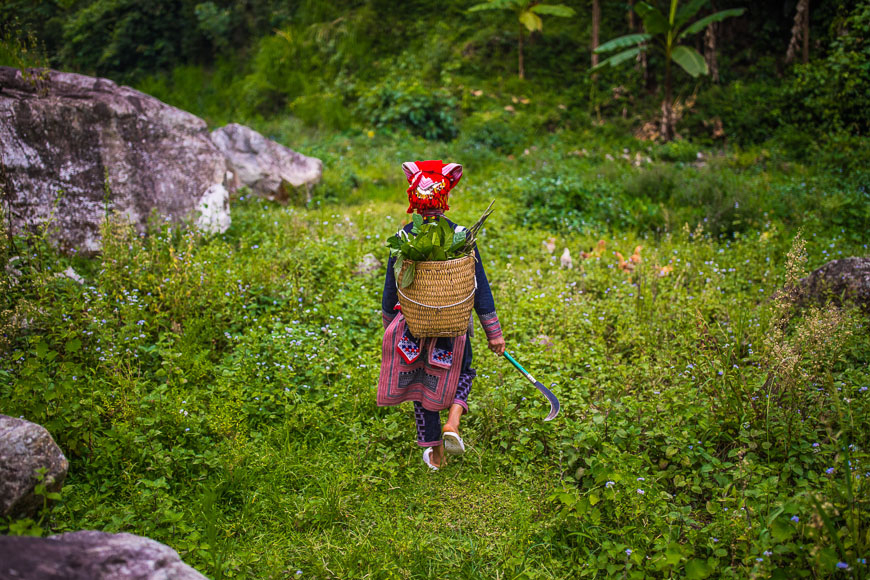
Cold winter evenings in the north of Vietnam are the perfect time to try a Red Dao bath; however, the baths are excellent at any time of year. Topas Riverside Lodge in Sapa offers a herbal bath experience in tubs overlooking the Nam Cang River. In Hanoi, Dao’s Care partners with Red Dao women in Sapa to offer traditional herbal baths and Dao massages at a day spa in the capital. You can also find tubs with views of the mountains at Sapa Napro in Ta Phin Village outside Sapa. Wherever you have your Red Dao bath, you’re sure to emerge feeling calm and blissful.




